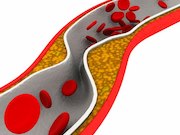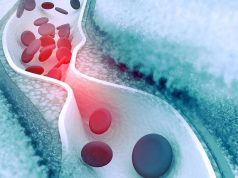Increase in use of high-intensity statin, ezetimibe; only 23.1 percent reach LDL-C of <100mg/dL
FRIDAY, Jan. 19, 2018 (HealthDay News) — For patients with autosomal recessive hypercholesterolemia (ARH), low-density lipoprotein cholesterol (LDL-C) levels remain high despite intensive treatment, according to a study published in the Jan. 23 issue of the Journal of the American College of Cardiology.
Laura D’Erasmo, M.D., Ph.D., from the Sapienza University of Rome, and colleagues obtained data for 52 patients with ARH and assessed changes in lipid management, achievement of LDL-C goals, and cardiovascular outcomes.
The researchers observed an increase in the use of high-intensity statin and ezetimibe in combination with lipoprotein apheresis during a mean follow-up of 14.1±7.3 years; lomatipide was added in six patients. At nadir, the mean LDL-C was 164±85.1 mg/dL (−69.6 percent from baseline); a better response was seen in patients taking lomitapide (−88.3 percent). LDL-C of <100 mg/dL was reached by 23.1 percent of patients. Incident atherosclerotic cardiovascular disease (ASCVD) occurred in 26.9 percent of patients during follow-up, and 11.5 percent had a new diagnosis of aortic valve stenosis. There were no cases of incident stroke. Major predictors of incident ASCVD included age (≥30 years) and presence of coronary artery disease at diagnosis.
“Despite intensive treatment, LDL-C in ARH patients remains far from targets, and this translates into a poor long-term cardiovascular prognosis,” the authors write. “Our data highlight the importance of an early diagnosis and treatment and confirm the fact that an effective treatment protocol for ARH is still lacking.”
Several authors disclosed financial ties to pharmaceutical companies, including Aegerion, which partly funded the study.
Copyright © 2018 HealthDay. All rights reserved.








